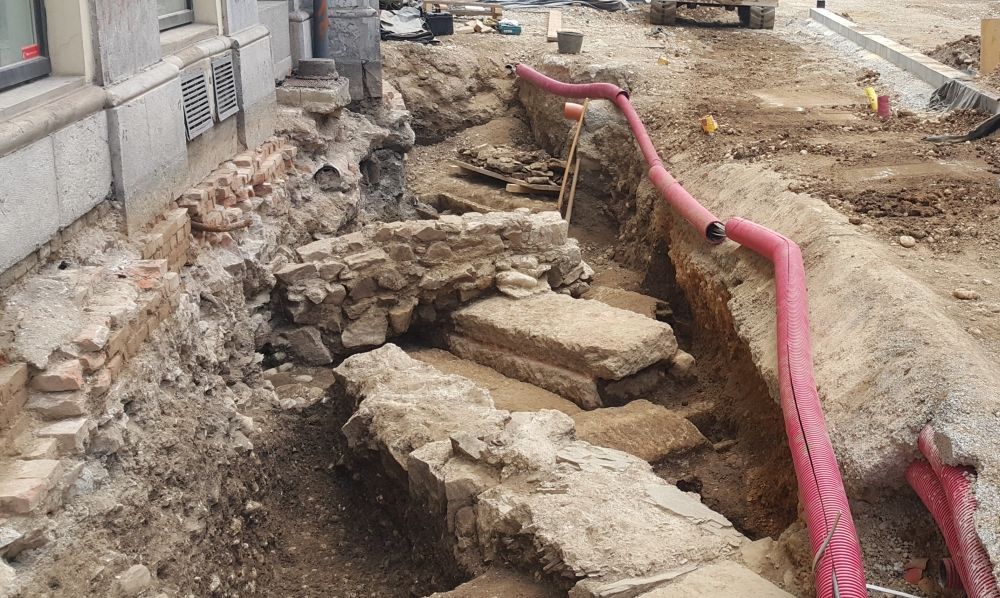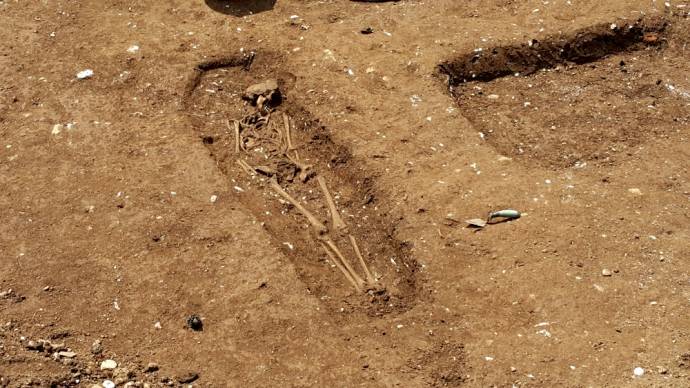The cemetery architecture, decorated with frescos and mosaics, is unlike anything that has been found so far around Roman-era graves in Ljubljana, the coordinator of the excavation, Andrej Gaspari, told the STA on Tuesday.
Related: 25 Things to Know About Slovenia's Green City of Dragons
He said that based on the discoveries so far, it could be assumed that the finds include remains of chapels and possibly mausoleums. Fragments of black and white mosaics, and frescos were also found.
The finds date back to the middle or late the 4th century, Gaspari of the Faculty of Arts told the newspaper Delo.

A tomb stone can be seen in the middle of the picture
Under the floor mosaics, sarcophagi with remains of the deceased were discovered. It is presumed that some of them had been buried there before the buildings were erected.
Related: 25 Things to Know About Ljubljana Castle
Archaeologists assume that members of a well-off early Christian community were buried there.
Such a cemetery architecture has not been found in Emona so far, Gaspari said. In the past, 15 sarcophagi were discovered in Gosposvetska and during the excavations that started last year another 35 were uncovered. Three sarcophagi are to be opened today.
Archaeologists are also excited about three tomb stones with inscriptions from the 2nd to 3rd centuries that were secondarily used as tomb covers.

More of the site
One of them is a complete mystery, being very fragmented and bearing a Greek inscription, while the other two contained details about two high-ranking Roman soldiers, which is an extremely rare find.
Top Slovenian archaeologists are working on the site and the excavation work is to continue for another ten days if weather permits. The final two guided tours of the site will be organised this Saturday at 11 AM and 4 PM.







